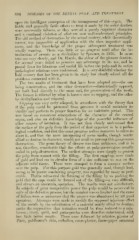Page 884 - My FlipBook
P. 884
894 DISEASES OF THE DENTAL PULP, AND TREATMENT.
upon the intelligent conception of the management of this organ. The
feeble and generally futile efforts to treat it made by the older dentists
were necessarily failures, as they were of a purely empirical character
and a continual violation of what are now Avell-understood principles.
The old method of destruction by the actual cautery, while theoretically
correct, was impossible of application Nvith the then imperfect appli-
ances, and the knowledge of the proper subsequent treatment ^yas
whoUv wanting. There was little or no progress until after the in-
troduction of arsenic as a devitalizer by Spooner, in 1836. It came
into use very slowly, and Dr. Harris, the ablest of the pioneer dentists,
for several years tailed to perceive any advantage in its use, and he
passed from' his laborious aud useful life before the pulp and its entire
pathological relations were understood. It is very doubtful whether the
half century that has been given to its study has clearly solved all the
problems connected with it.
The two modes of treatment that have been adopted are—the one
being conservative, and the other destructive—diametrically opposed,
yet both lead directly to the same end, the preservation of the tooth.
The former is effected by Avhat is known now as capping, and the other
by devitalization and removal.
Capping was very early adopted, in accordance with the theory that
if the pulp could be protected from pressure it would maintain its
vitality and perform its proper function for an indefinite period. This
was based on erroneous conceptions of the character of the central
organ, and also on defective knowledge of the powerful influence of
other sources of irritation.- It was not then clearly understood that
the surface of the pulj) from the period of first exposure is in a patho-
logical condition, and that this must progress unless measures be taken to
abort it, and that the mere interposing of some media, though nearly
allied to dentine in character, would not avail to prevent this gangrenous
destruction. The germ theory of disease was then unknown, and it is
not, therefore, remarkable that the efforts at pulp-preservation usually
ended in pulp-destruction. The earliest attempts were sim])ly to protect
the pulp from contact with the filling. The first cappings were made
of gold and lead cut in circular form of a size sufficient to rest on the
adjacent solid tissue. These were stamped to form a concave surface
over the pulp. For this purpose gold was generally used, though lead,
owing to its poorer conducting property, was regarded by many as pref-
erable. Harris advocated the forming of the filling by so packing the
gold that the caps would be formed out of the filling—a very difficult,
and always an uncertain, operation. The results were not satisfactory.
In subjects of great recuperative power the pulp would be preserved in
spite of the defective process, but the number was so limited and the cases
of failure were so numerous that the process was abandoned by all good
operators. Attemjits were made to modify the supposed injurious effect
of the metals by the substitution of a material nearly allied to dentine,
under the supposition that irritation would be thus reduced to a min-
imum ; ivory, quill, and gutta-percha were therefore substituted, with
but little better results. These were followed by asbestos, plaster of
Paris, goldbeater's skin, collodion, court-plaster, tissue-paper saturated


